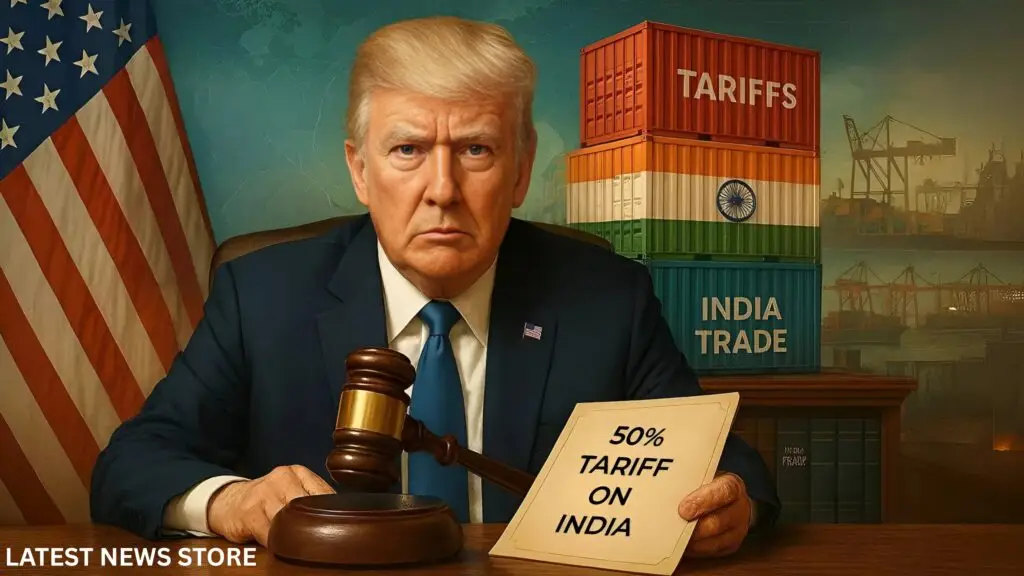
IT Started in 2017
When former U.S. President Donald Trump took office in 2017, one of his key promises was to rebalance global trade and put “America First.” While much of the trade war headlines focused on China, India also became a target of Trump’s aggressive trade policy — and one issue in particular captured his attention: India’s high import tariffs, especially a 50% (or more) tax on American motorcycles like Harley-Davidson.
Trump’s criticism wasn’t just rhetoric. It influenced trade policies, led to retaliatory tariffs, and created one of the more tense periods in U.S.-India trade relations in decades.
The Tariff Controversy: What Was the 50% About?
Although the United States did impose tariffs on various Indian goods, much of Trump’s public outrage centered on India’s own high tariffs, especially the 50%–100% duty on imported motorcycles.
Trump often cited Harley-Davidson, an iconic American brand, which faced a 50% import tariff (reduced from 100%) when selling its bikes in India.
He called it “unacceptable” and “not reciprocal”, especially because India enjoyed preferential access to U.S. markets through the GSP program, which allowed Indian goods to enter the U.S. duty-free.
“When they send a motorcycle to us, we charge them nothing. When we send it to them, they charge us 100%. That’s not fair,” Trump said in multiple speeches.
The GSP Withdrawal: Trump’s Big Move
In response to what he called “unfair trade practices,” Trump took action:
- In June 2019, he revoked India’s GSP (Generalized System of Preferences) status.
- This removed duty-free access for nearly $6 billion worth of Indian exports to the U.S.
- Sectors like jewelry, textiles, and auto parts were hit hardest.
India responded by imposing retaliatory tariffs on 28 American products, including almonds, apples, and chemicals — many of which came from swing states important in U.S. elections.
U.S. Tariffs on Indian Products
While the “50% tariff” often referred to India’s tax on U.S. goods, the U.S. also raised tariffs on some Indian products under Trump, particularly as part of broader moves against steel and aluminum imports:
- 25% tariff on steel
- 10% tariff on aluminum
These affected Indian exporters and further strained the trade ties between the two nations.
Trade Volume and Impact
Despite the disputes, U.S.-India trade continued to grow overall, but the GSP withdrawal and tit-for-tat tariffs hurt small businesses and exporters on both sides.
Harley-Davidson, the symbolic focus of Trump’s complaints, eventually shut down operations in India in 2020 due to weak sales, competition, and high costs — tariffs being one factor among many.
Strategic vs Economic Tensions
Ironically, while economic tensions simmered, strategic and military ties between the U.S. and India grew stronger during Trump’s term. Shared concerns about China in the Indo-Pacific brought the two nations closer on defense, even as they sparred on trade.
Where Things Stand Today
Under President Joe Biden, the GSP has not yet been restored for India, although trade relations have stabilized. Some tariffs remain, and both countries continue to negotiate a more comprehensive trade agreement.
Meanwhile, India has reduced some import duties on select American goods, but significant barriers remain. Talks on e-commerce rules, digital services taxes, and market access are ongoing.
Final Thoughts: The 50% Tariff and Its Legacy
Trump’s complaints about India’s 50% tariff highlighted a deeper issue in global trade: the challenge of reciprocity in a world of unequal tariffs. His decision to revoke GSP and publicly call out India set a more aggressive tone in U.S.-India trade relations.
While some of Trump’s actions were seen as disruptive, they also pushed India to reassess its own trade posture. Today, the conversation around tariffs continues — but with more diplomacy and a broader view of the strategic partnership.